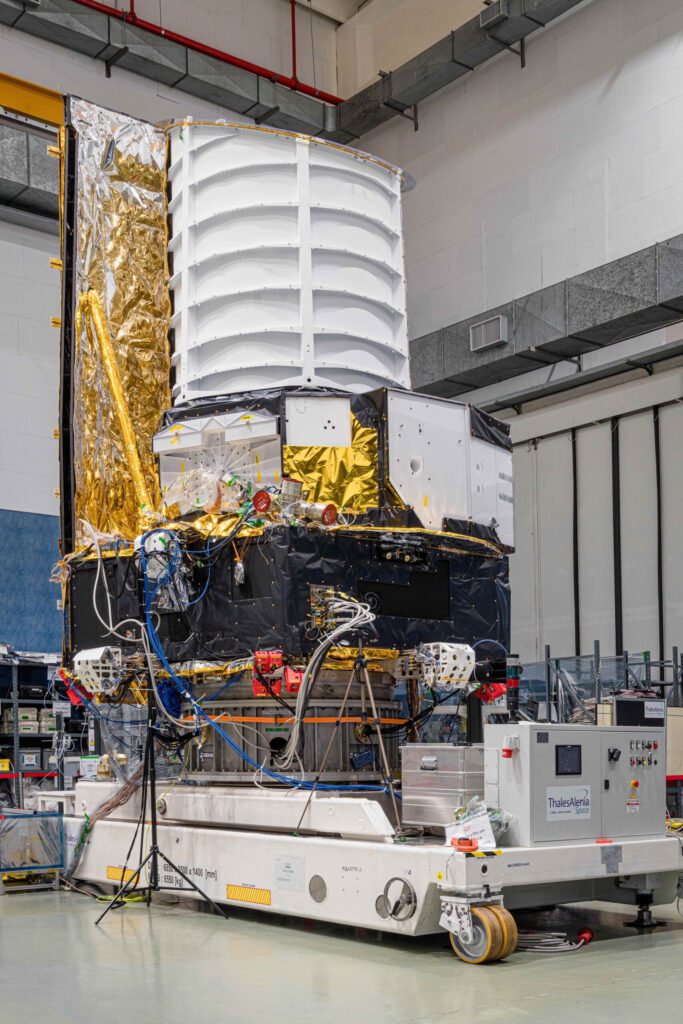The Satellite and Service Module (SVM)
The Euclid spacecraft is composed of three main parts: the Service Module, the Payload Module, including the telescope and the Scientific Instruments. It will have a launch mass of around 2100 kg and is designed for a nominal mission lifetime is six years.
The Service Module (SVM) hosts most of the spacecraft subsystems that are needed to operate the payload, including telemetry, power, thermal control, and attitude and orbit control (AOCS) systems.
The Euclid Payload module has been designed, manufactured and tested by Thales Alenia Space, the Euclid Prime Contractor for ESA.
It provides X and K band communications, with a K band science data rate of about 55 Mbit/s during the daily telecommanding and communications period of 4 hours, leading to a daily downlink capability of 850 Gbits. To store the large data volume that will be accumulated during observations, Euclid will have a mass memory of 4 Tbit. To meet the high precision imaging requirements, the Euclid attitude and orbit control system provides an extremely stable pointing with a dispersion of less than 75 milli-arcseconds per visual exposure. At those accuracies, a high thermal stability is also required to protect the telescope assembly from optical misalignments due to thermal drifts.
The Sunshield, part of this SVM, protects the Payload Module (PLM) from illumination by the sun and supports the photovoltaic assembly supplying electrical power to the spacecraft with an available power of more than 2 kW.
In 2022, the fully integrated spacecraft was subjected to the conditions of space and all its subsystems were fully tested together at the Cannes facilities of Thales Alenia Space, as described in this video. This was one of the last verification stages before this spacecraft was launched for its mission.

